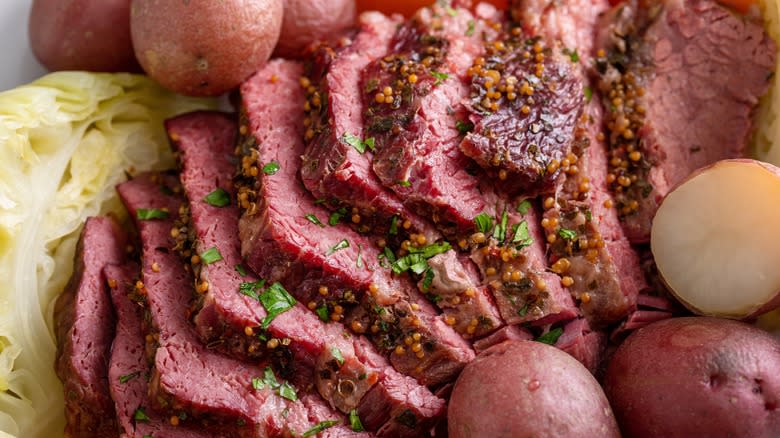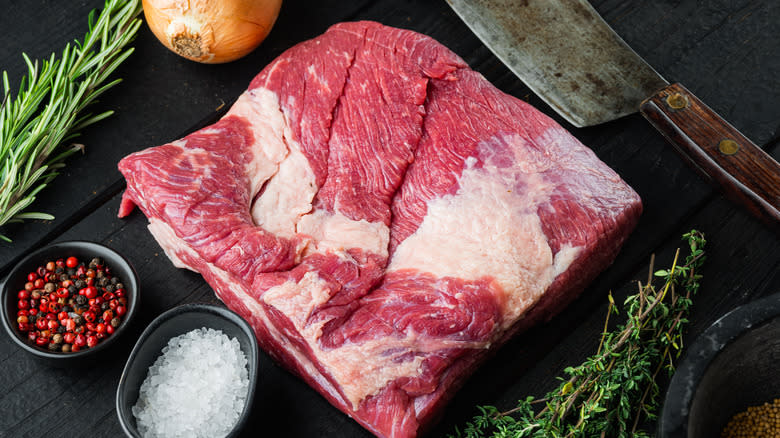The Best Cut Of Meat For The Most Tender Corned Beef

For corned beef lovers, this deliciously savory cured meat is not just a Saint Patrick's Day celebration dish. People enjoy it year-round, especially in hearty breakfast meals like Reuben sandwiches and corned beef hash, or simply as a weeknight dinner with potatoes and vegetables. When it comes to cooking corned beef, choosing the right cut of meat is the key to achieving that tender, melt-in-your-mouth texture. Among the options available, brisket stands out as the best.
Brisket is popular because, although it's inherently tough, it becomes incredibly tender when cooked low and slow. This cut is taken from the lower chest area of the cow, a region that gets a lot of exercise, leading to a dense, fibrous texture. This makes it perfect for corned beef, as the long cooking times break down the connective tissues, transforming a tough cut into something delicious and tender.
Brisket's fat content also plays a crucial role in its success as corned beef. As it cooks, the fat slowly melts, keeping the meat moist and adding depth to the flavor. The balance between fat and muscle makes brisket ideal for corned beef, ensuring a rich, juicy result that pairs well with a variety of dishes. However, within the brisket primal category, there's a choice to make: flat cut or point cut.
Read more: The Most Popular Cuts Of Steak Ranked Worst To Best
The Best Cut For Corned Beef Depends On You

Between the flat and the point cut each has its own characteristics, and choosing between them depends on what you're looking for in your corned beef. The flat cut, also known as the "first cut," is the leaner portion of the brisket. It's more uniform in shape, which makes it easier to slice neatly after cooking. This cut is great for those who prefer a less fatty corned beef but still want a good amount of tenderness. The flat cut is ideal if you're planning to serve corned beef for a more formal meal or if you want clean slices for sandwiches or plating the staple St. Paddy's Day corned beef meal.
On the other hand, the point cut, also known as the "second cut" or "deckle," contains more fat and marbling. This gives it a richer flavor and a softer, more tender texture. Because of the higher fat content, the point cut tends to shred more easily, making it a great choice for dishes where you're less concerned about clean-cut presentation and more focused on flavor and juiciness — think corned beef hash, stews, or pulled beef burgers. This cut's additional fat content also makes it a favorite for those who want corned beef that is exceptionally tender and juicy. In essence, both cuts have their advantages and, ultimately, the choice depends on your personal preference and how you plan to serve your corned beef dish.
Read the original article on Tasting Table


